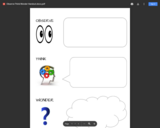
Overview / Description: This unit will examine the experience of Native Americans during the Great Depression in the United States. It will integrate comparisons with the experiences of other minority groups as well as exposing students to primary source documents related to the government policies which were adopted toward Native Americans during the time. Guiding Questions: What were the US government’s policies toward Native Americans leading up to the Great Depression? Were they fair? What was FDR’s response to the struggles of Native Americans during the Great Depression? What was the Native American experience like during the Great Depression and how did it compare to other minority groups? Learning goals/objectives: Analyze primary and secondary sources related to the experience of Native Americans during the Great Depression. Summarize the experiences of Native Americans during the Great Depression.
- Subject:
- American Indian Studies
- Sociology and Anthropology
- U.S. History
- World History
- Material Type:
- Lesson Plan
- Author:
- Jessica Pingel
- Date Added:
- 06/13/2019

















